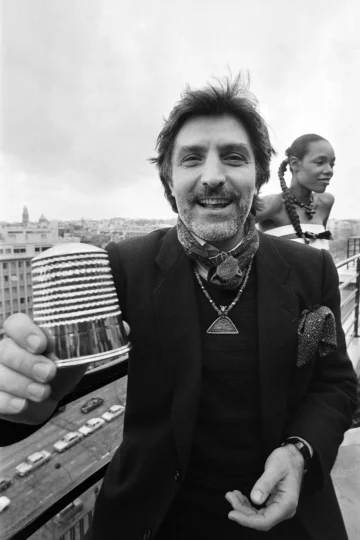
Emanuel Ungaro is a name synonymous with bold patterns, luxurious fabrics, and avant-garde fashion. As one of the most influential designers of the 20th century, he carved out a distinct identity in the industry, blending elegance with artistic rebellion. His fashion house, established in the 1960s, quickly became a symbol of haute couture excellence. Over the decades, Ungaro’s work has continued to inspire designers, proving that his legacy is deeply ingrained in the fabric of high fashion.
Table of Contents
Early Life and Background
Emanuel Ungaro was born on February 13, 1933, in Aix-en-Provence, France, to Italian parents who had fled fascist Italy. Growing up in a family of tailors, he was naturally drawn to the world of fabrics, stitching, and design. His father, a skilled tailor, played a significant role in shaping his early interest in fashion.
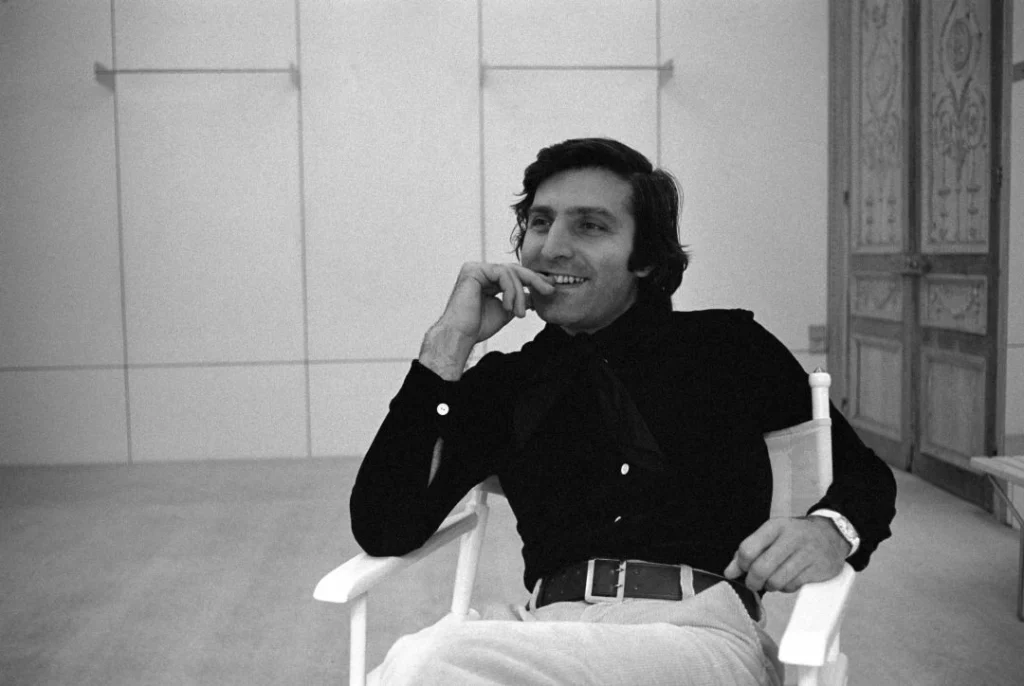
photo/wwd
As a young boy, Ungaro was fascinated by colors, textures, and the way garments could be manipulated to create striking silhouettes. This fascination led him to explore design more seriously, and by the time he was in his early twenties, he had already made up his mind to pursue a career in fashion.
Journey into Fashion
In 1955, at the age of 22, Emanuel Ungaro moved to Paris, the heart of the fashion world. His talent and passion for design quickly caught the attention of some of the most prestigious names in the industry. He trained under Cristóbal Balenciaga, one of the greatest couturiers of all time, and spent six years mastering the art of tailoring and draping.
Balenciaga’s influence was evident in Ungaro’s early work—structured silhouettes, precise cuts, and a deep respect for craftsmanship. After his time with Balenciaga, he worked briefly with André Courrèges, where he refined his skills in creating modern, sleek, and innovative designs.

photo/joel&sonfabrics
The Birth of the Emanuel Ungaro Brand
In 1965, Ungaro launched his own fashion house in Paris, marking the beginning of a legendary career. From the start, his brand was characterized by a daring use of color, intricate patterns, and a fearless approach to fashion. While many designers of his era embraced minimalism, Ungaro took the opposite route, infusing his collections with vibrant prints, ruffles, and unconventional fabric combinations.
His first collections were met with critical acclaim, and by the 1970s, the Emanuel Ungaro brand had become a go-to label for women seeking bold, confident, and sophisticated clothing.
Design Philosophy
What set Emanuel Ungaro apart was his fearless use of patterns and textures. His signature designs often featured:
- Bright, clashing colors – He was never afraid to mix unexpected hues, creating eye-catching ensembles.
- Luxurious draping – Inspired by his training under Balenciaga, Ungaro’s mastery of fabric manipulation gave his dresses a fluid, sensual appeal.
- Playful yet sophisticated ruffles – Ruffles became a defining feature in many of his collections, adding movement and drama.
- Avant-garde elements – Ungaro seamlessly combined classic tailoring with artistic and sometimes provocative designs.
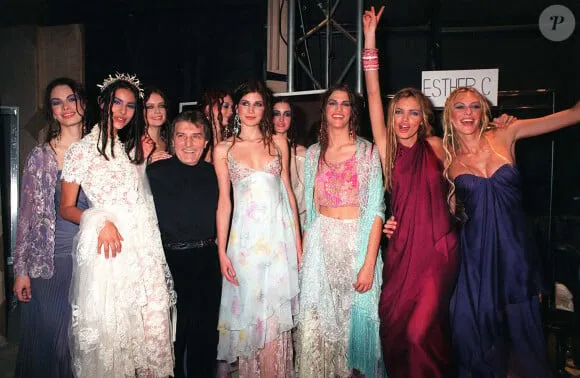
photo/purepeople
His creations exuded femininity and power, making them a favorite among women who wanted to make a bold statement.
Notable Collections and Works
Throughout his career, Ungaro reached numerous milestones that solidified his status as a fashion icon:
- 1973 – Launched his first menswear line, bringing his signature aesthetic to men’s fashion.
- 1977 Collection: Introduced his signature vibrant prints and extravagant ruffles.
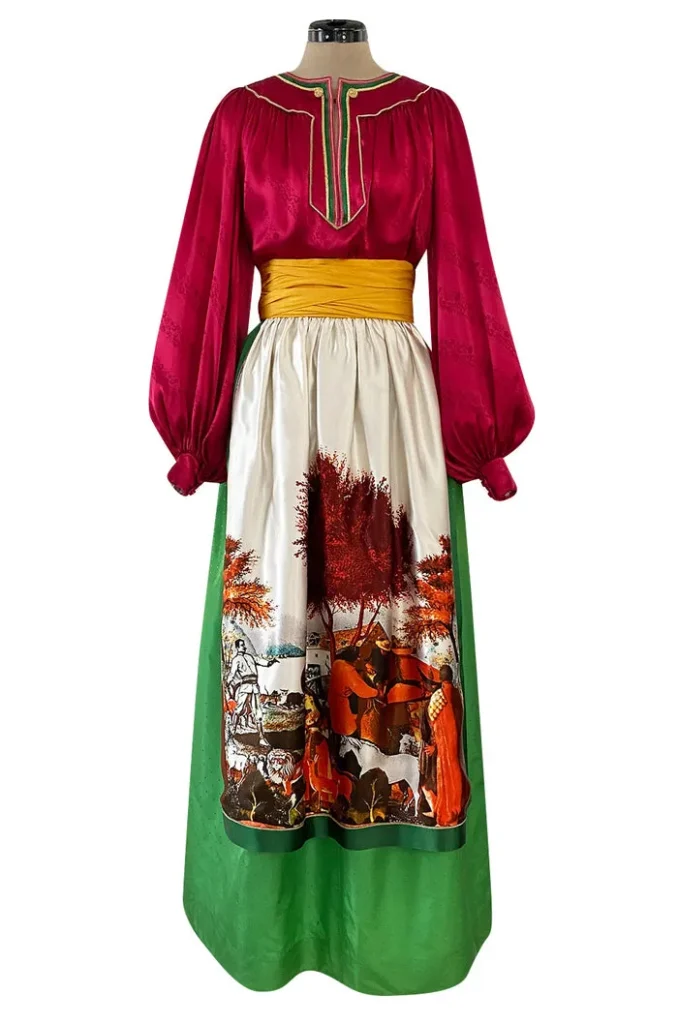
photo/shrimptoncouture
- 1980s Power Suits: Feminine yet strong, these tailored suits became a staple for confident women.
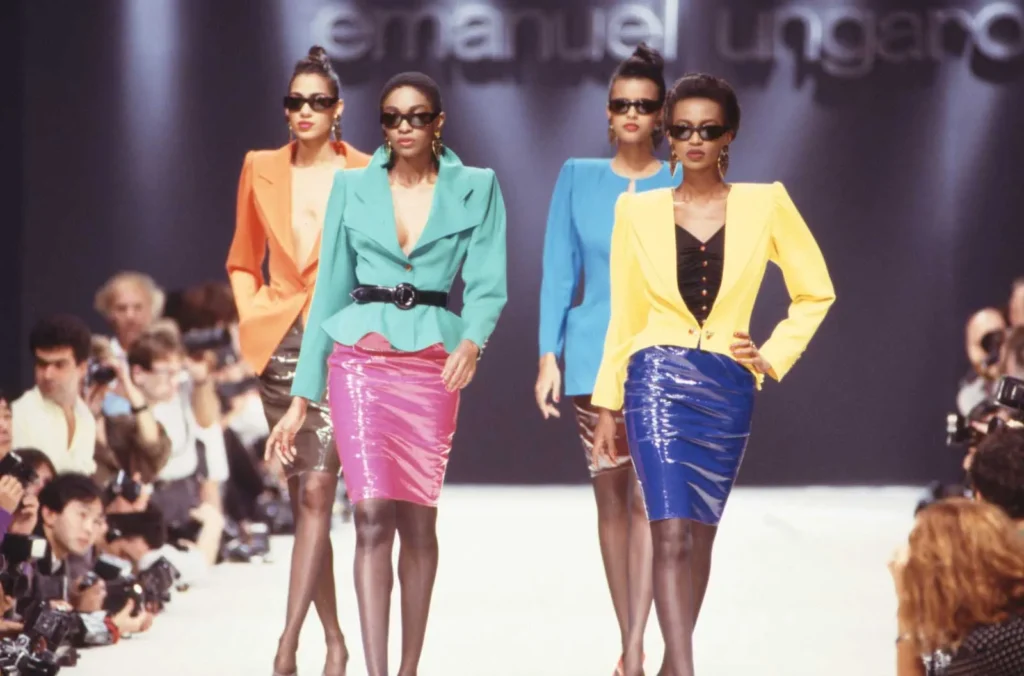
photo/vogue
- 1990s Romantic Revival: Soft, flowing fabrics and pastel tones dominated his collections.
- 1983 – Introduced a highly successful fragrance line, starting with “Diva,” which became an instant classic.
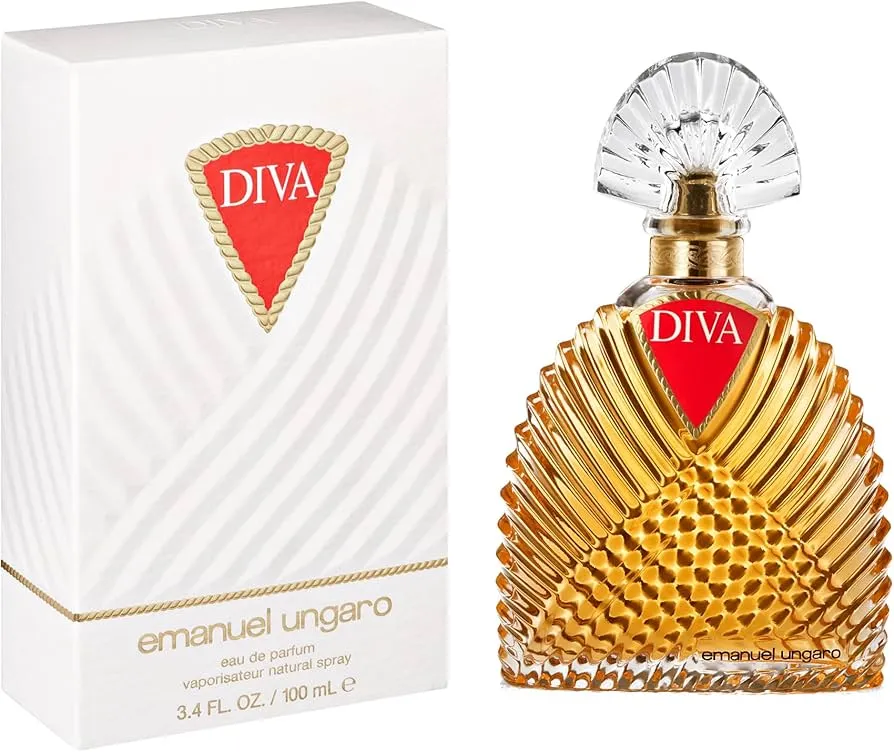
photo/amazon
- 1990s – Expanded his brand into accessories, eyewear, and additional fragrance collections.
His ability to evolve with the times while staying true to his unique vision was a testament to his genius.
Also Read – Sonia Rykiel: The Revolutionary Queen of Knitwear and Parisian Chic
Interesting Facts About Emanuel Ungaro
- His first job in fashion was sewing buttons for a tailor.
- He was known for personally adjusting garments for clients.
- Unlike many designers, he sketched by hand, relying on intuition rather than digital methods.
Innovation in Fashion
Ungaro was an innovator in fabric manipulation and print design. He played with bold layering, mixing unexpected textures like velvet and chiffon. His daring approach paved the way for many contemporary designers who experiment with color and form.
Achievement and Rewards
His contributions to fashion were widely recognized. Some of his most notable accolades include:
- Chevalier de la Légion d’Honneur (1985): One of France’s highest honors.
- Golden Thimble Award: A prestigious recognition in haute couture

Golden Thimble Award/photo/lucasmartinvintage
The Influence of Emanuel Ungaro on Fashion
Emanuel Ungaro was a revolutionary designer who challenged fashion norms. He helped redefine women’s fashion, proving that femininity and boldness could coexist. His legacy can be seen in the works of modern designers who embrace color, print, and a mix of elegance with edginess.
His contributions to haute couture and ready-to-wear fashion continue to influence the industry, proving that his work remains timeless.
Fragrance Line: A Sensory Masterpiece
Beyond his mastery in fashion, Emanuel Ungaro extended his artistic vision into the world of fragrances. In 1983, he launched “Diva,” a perfume that became an instant success. With its elegant and seductive scent, Diva captured the essence of femininity that his designs represented. The perfume was housed in a sculpted bottle that mirrored the draping techniques he used in his garments, further emphasizing his attention to detail.
Following the success of Diva, Ungaro released several other fragrances, including:
- Ungaro Pour Homme (1991): A bold, masculine scent that mirrored the sophistication of his menswear.

Ungaro Pour Homme (1991)/photo/fragrantica
- Fleur de Diva (1997): A fresh, floral variation of the original Diva fragrance.
- Apparition (2004): A modern and playful fragrance targeting a younger audience.

photo/parfumexpress
Ungaro’s fragrance line proved that his creativity extended beyond fabric and design—he had an innate ability to evoke emotions through scent, much like he did with his fashion collections.
Challenges and Changes in the Fashion Industry
Like many luxury fashion houses, the Emanuel Ungaro brand faced significant challenges as the industry evolved. The rise of fast fashion in the late 1990s and early 2000s changed the landscape, making high-end, handcrafted couture less accessible to the everyday consumer.
Additionally, shifts in leadership within the brand created challenges in maintaining its original identity. In the 2000s, Ungaro sold a controlling stake in his company, and over the years, various designers took over creative direction. Some of these changes were met with mixed reactions, as the brand struggled to balance modern trends while staying true to its founder’s vision.
Emanuel Ungaro’s Retirement and Later Years
In 2004, after nearly four decades of influencing the fashion world, Emanuel Ungaro stepped away from his brand. He left the company in the hands of new designers, marking the end of an era.
In his later years, Ungaro lived a relatively private life, staying out of the spotlight but leaving behind a legacy that continued to inspire fashion enthusiasts. On December 21, 2019, Emanuel Ungaro passed away at the age of 86, leaving the fashion world mourning the loss of a true visionary.
The Brand After Emanuel Ungaro
After Ungaro’s retirement, the brand went through several transitions, with different creative directors taking the helm. Some of the notable designers who led the house post-Ungaro include:
- Esteban Cortázar (2007-2009): A young, fresh talent who tried to modernize the brand while keeping its original DNA intact.

Esteban Cortázar/photo/people
- Lindsay Lohan’s Brief Involvement (2009): A controversial appointment that led to criticism and instability.
- Giles Deacon (2010-2011): A respected designer who attempted to bring structure and elegance back to the house.

Giles Deacon/photo/hello magazine
Despite these efforts, the brand struggled to recapture the magic of its founder’s golden years. However, Emanuel Ungaro’s name still carries weight in the industry, and his contributions to fashion continue to be celebrated.
Ungaro’s Lasting Legacy in Modern Fashion
Though his fashion house has faced challenges in the modern era, Emanuel Ungaro’s influence remains undeniable. Many contemporary designers have drawn inspiration from his work, particularly his use of bold prints, unexpected color combinations, and exquisite draping techniques.
Several trends today—such as maximalist fashion, bold florals, and vintage glamour—can be traced back to Ungaro’s early designs. His willingness to embrace femininity without restraint set him apart and continues to be a guiding principle for designers who wish to challenge conventions.
Emanuel Ungaro and Celebrity Culture
Ungaro’s designs were a staple among Hollywood’s elite, with numerous celebrities wearing his creations on red carpets and at prestigious events. Some of the most iconic figures who adorned his designs include:
- Princess Diana: She often wore his elegant yet fashion-forward dresses.
- Jacqueline Kennedy Onassis: A major fan of his work, known for her sophisticated style.
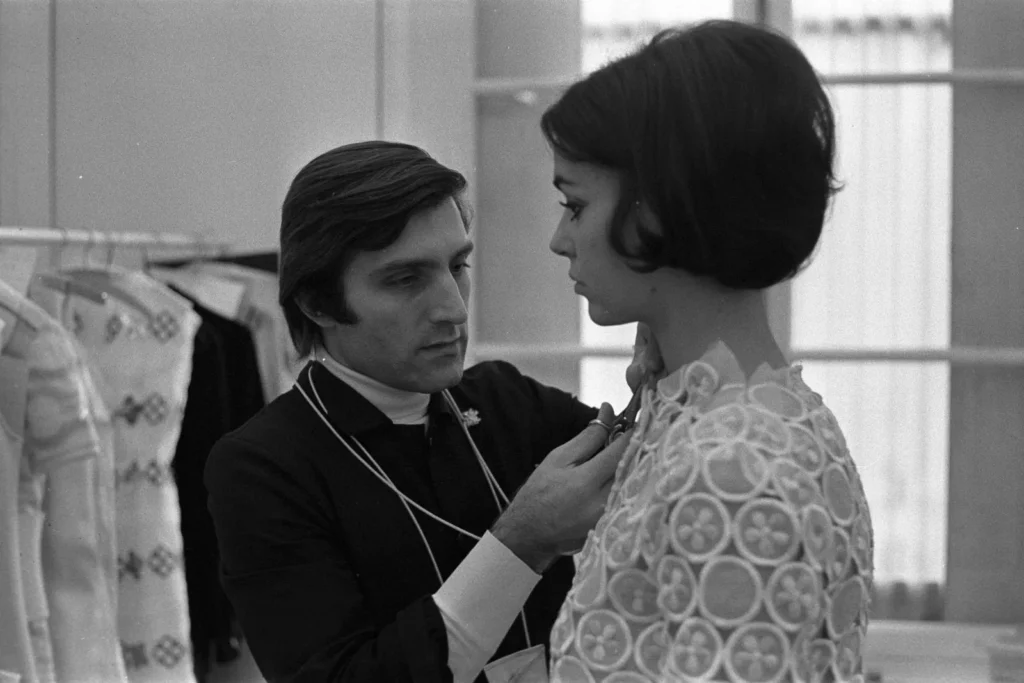
photo/vogue
- Madonna: Embraced his bold and edgy pieces in the 80s and 90s.
- Nicole Kidman, Penélope Cruz, and Eva Longoria: Frequently seen in his vibrant and romantic gowns.
His designs captured the essence of luxury, glamour, and confidence, making them a favorite among A-listers and fashion icons.
A Closer Look at Emanuel Ungaro’s Impact on Haute Couture
Ungaro was not just a designer; he was an artist who used fabric as his canvas. His approach to haute couture was unique because:
- He never played it safe—his designs were bold, dramatic, and full of life.
- He maintained a balance between structure and fluidity, allowing his dresses to move beautifully on the body.
- His use of ruffles, drapes, and layered textures was unparalleled.
He stood out among other Parisian designers by staying true to his artistic instincts, even when trends shifted toward minimalism. His work remains an important chapter in the history of haute couture, showcasing the power of creativity in fashion.
Emanuel Ungaro at a Glance:
| Category | Details |
|---|---|
| Full Name | Emanuel Ungaro |
| Date of Birth | February 13, 1933 |
| Place of Birth | Aix-en-Provence, France |
| Heritage | Italian (Parents fled fascist Italy) |
| Early Career | Worked under Cristóbal Balenciaga and André Courrèges |
| Founded Own Fashion House | 1965, in Paris |
| Signature Design Elements | Bold patterns, vibrant colors, luxurious draping, avant-garde elements |
| First Menswear Line | 1973 |
| Most Iconic Perfume | “Diva” (1983) |
| Other Fragrances | “Ungaro Pour Homme” (1991), “Fleur de Diva” (1997), “Apparition” (2004) |
| Awards & Recognitions | Chevalier de la Légion d’Honneur (1985), Golden Thimble Award |
| Famous Celebrity Clients | Princess Diana, Madonna, Nicole Kidman, Penélope Cruz, Eva Longoria, Jacqueline Kennedy Onassis |
| Challenges | Rise of fast fashion, brand leadership changes |
| Retirement | 2004 |
| Date of Death | December 21, 2019 |
| Brand Status Today | Still operates but has seen leadership and creative changes |
| Legacy in Fashion | Known for fearless femininity, bold use of color, and innovation in haute couture |
Conclusion
Emanuel Ungaro’s journey from a young tailor’s son to a world-renowned designer is a testament to passion, artistry, and fearless creativity. His legacy is not just in the garments he created but in the way he redefined feminine fashion, embracing boldness in ways others dared not.
Though the fashion house that bears his name has seen ups and downs, his influence is still alive in the works of contemporary designers. His signature style—colorful, romantic, and unapologetically extravagant—continues to be celebrated, proving that true artistry in fashion never fades.
FAQs
1. What made Emanuel Ungaro’s designs unique?
Ungaro was known for his bold use of colors, intricate patterns, and fluid draping techniques. He blended femininity with avant-garde elements, making his designs stand out in the world of haute couture.
2. Why did Emanuel Ungaro retire from fashion?
Ungaro retired in 2004 after decades of success, leaving his brand in the hands of new designers. He preferred to step away and enjoy a quieter life rather than continue adapting to an evolving industry.
3. What is the most famous Emanuel Ungaro perfume?
“Diva,” launched in 1983, is his most iconic fragrance. It became a symbol of elegance and femininity, much like his fashion collections.
4. Who were some famous celebrities that wore Emanuel Ungaro’s designs?
Many A-list celebrities, including Princess Diana, Madonna, Nicole Kidman, and Jacqueline Kennedy Onassis, were fans of his work and frequently wore his creations.
5. Does the Emanuel Ungaro brand still exist today?
Yes, the brand continues to operate, although it has gone through many changes in leadership and creative direction. While it may not hold the same prestige as it did in its golden years, the name Emanuel Ungaro remains respected in the fashion industry.
One thought on “Emanuel Ungaro: A Legacy of Bold Fashion and Timeless Elegance”